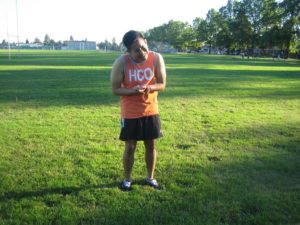Dyshidrotic eczema is a skin condition that causes formation of small blisters on the palms, fingers and soles of the feet. This condition is due to exposure to chemicals such as nickel or cobalt; allergies, fungal infections and excessive stress. The affected area becomes thick and eventually turns scaly and result to redness, inflammation and itching.
https://www.youtube.com/watch?v=EHZZCzW6bzU
Symptoms of dyshidrotic eczema
- Formation of tiny blisters on the soles of the feet, sides of the fingers and on the palms.
- Severe itchiness or burning sensations around the blisters
- Sweating around the blisters
- The blisters usually disappear in 2-3 days and the skin becomes tight or dry, cracked and red.
- The affected area becomes susceptible to development of staph infection due to open areas of the skin that includes pain; formation of blisters that drains pus; swelling and crusting skin.
Causes

- Seasonal allergies
- Severe stress
- Soaking in water for a long time
- Severe sweating of the feet or hands
- Allergic reaction to cobalt or nickel found in jewelries, mobile phones and some foods.
Treatment
- Avoid scratching any open sores or blisters to prevent further inflammation and redness of the area and high risk of development of fungal or bacterial infections. Keep nails short and wear a thin cotton gloves and socks to prevent further irritation and for fast healing of the condition.
- Apply cold and wet compress on the affected area to lessen the itchiness, the inflammations and the pain. soak a clean wash cloth in cold water and keep it refrigerated for an hour and then wrap it around the affected areas for at least 15 minutes, 2-3 times every day. Another alternative is putting some ice cubes in a plastic bag, wrapped it in a towel before placing to the area. Avoid soaking the swelling feet or hands directly in ice to prevent further damage and delay the healing.
- Take antihistamines to lessen the itchiness and the inflammation.
- Mix oatmeal and a few drops of water, mix them well until it becomes a paste and then apply it directly on the area. Let it dry and then rinse it off gently using running water. Oatmeal is rich in anti-inflammatory properties which lessen the symptoms of dyshidrotic eczema.
- Apply a thick ointment such as petroleum jelly to protect the area from irritants. Moisturize the skin regularly especially after taking a bath to prevent dryness and cracking of skin.
- Botulinum toxin shot is given to prevent sweating of the hands and feet and lessen formation of blisters.
Tips
- Avoid exposure to allergens such as pollen and pet dander. Wash pets using dander-reducing pet shampoos to lessen episodes of allergies.
- Install a humidifier inside the room to moisturize the air and prevents skin from drying out especially during cold and dry weather.
- Wear loose and soft clothing made of cotton, avoid clothing made of wool.
FACT CHECK
https://www.webmd.com/skin-problems-and-treatments/eczema/dyshidrotic-eczema#1
https://www.healthline.com/health/dyshidrotic-eczema
https://www.mayoclinic.org/diseases-conditions/dyshidrosis/symptoms-causes/syc-20352342